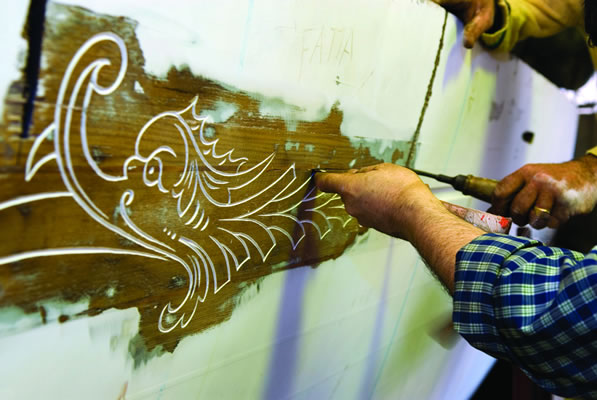Three generations of a family of Scottish yacht designers and builders, William Fife III was born in the small village of Fairlie on the Firth of Clyde. His father William Fife II (1821–1902) and grandfather William Fife I (1785–1865) had also been designers and boatbuilders in Fairlie. The family business operated from a yard on the beach in the village. Fife began building yachts in 1890 and soon surpassed the achievements of his father and grandfather and became known as one of the premier yacht designers of the day.
At the age of 14 Fife III began a five year apprenticeship with his father. With the increasing use of scientific calculations that helped to predict performance, William III was sent away farther up the Clyde, to further his apprenticeship with the J. Fullerton & Co. Shipyard. From there he moved to become the manager of Culzean Yacht & Steam Launch Works. With his duties overlapping with his increasing commitment to the family yard, and as Culzeans’ expansion moved them to Troon, in 1886 Fife III returned to Fairlie. In 1887 Fife III joined Watson and the Scottish America’s Cup syndicate on “Thistle” against the American defender Volunteer, and lost both races during the 7th America’s Cup races in New York. During his stay in New York Fife III met many of those that would become his closest friends and future patrons for many years to come. In 1889 Fife III designed the 20 rater “Dragon” and it was here the he drew the famous dragon logo adjourning cove stripe that would become Fifes trademark on all of his designs.
It was in the early 1890s that Fife III, acquired the equipment to build composite steel-framed wood planked yachts, and in 1894 the Fairlie Shipyard began experimenting with lightweight wood construction, double planking, all of which helped produce innovated hull shapes, prompting his father Fife II to comment that “Well I used to think I knew something of the form required for a boat, but after seeing these I’m not sure about it.” Two years later in 1894 Fife III took over the overall management of the firm.
Through the 1890s Fife III would go on to design up to 50 boats a year of which his yard built up to 20 of them. His Fairlie yard were able to build yachts up to 70′ in under 2 months, from order to launch., with no compromise in quality.
Fife III would go on to build and design two America’s contenders Shamrock I and III, became a prolific designer of metre boats. Of the 100 Fife designs still in existence today, there are around fifty still sailing and racing in the numerous classic regatta’s. Some notables are cruiser handicap rater Nan (1897), 36-rater Pen Duick (formerly Yum, 1898), cruiser handicap raters Moonbeam III (1903) and Moonbeam IV (1920), 15mRs Mariska (1908), Hispania (1909), Tuiga (1909) and The Lady Anne (1912), 12mR Cintra (the oldest 12mR in existence, launched 1909), 19mR Mariquita (1911), ketchs Sumurun (1914), Adventuress (1924) and Belle Aventure (1929) on the Eastern Seaboard, handicap rater Hallowe’en (1926), 23mR Cambria (1928), gaff-rigged schooner Altair (1931), all masterpieces of design.
Fife died in 1944, never having married and without issue. He is buried in Largs. The yard was continued for some years after his death by his nephew, but never achieved the renown known under Fife’s ownership.


